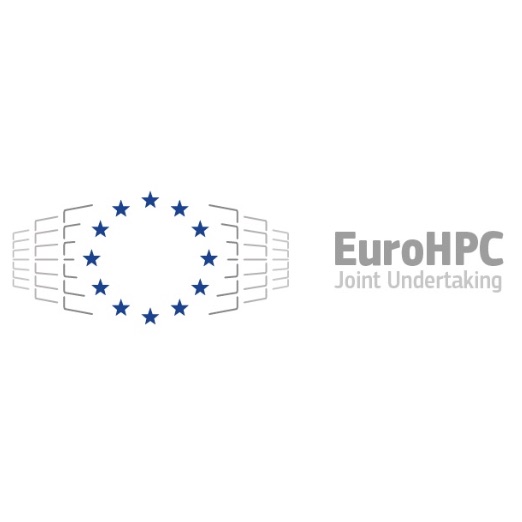 Four new supercomputers backed by a pan-European initiative will use Nvidia data center accelerators, networks and software for AI and high-performance computing. They include a system dubbed Leonardo, unveiled today at Italy’s CINECA research center, using Nvidia technologies to deliver what the company said is the world’s most powerful AI system.
Four new supercomputers backed by a pan-European initiative will use Nvidia data center accelerators, networks and software for AI and high-performance computing. They include a system dubbed Leonardo, unveiled today at Italy’s CINECA research center, using Nvidia technologies to deliver what the company said is the world’s most powerful AI system.
The four systems are the first of eight systems to be announced this year that Nvidia said will be among the world’s 50 most powerful computers and will form a regional network, “an engine to power Europe’s data economy,” said EuroHPC, the group driving the effort, in a white paper outlining its goals.
The systems will apply AI and data analytics for such scientific and commercial applications as fighting COVID-19 and climate change to the design of advanced airplanes, cars, drugs and materials.
Joining Leonardo are other new AI supercomputers planned for Czech Republic, Luxembourg and Slovenia which will act as national centers of competence, expanding skills and creating jobs.
The four supercomputers announced yesterday use Nvidia Ampere architecture GPUs and Nvidia Mellanox HDR InfiniBand networks to tap an ecosystem of hundreds of HPC and AI applications. Atos, an Nvidia systems partner headquartered in France, will build three of the four systems; Hewlett Packard Enterprise will construct the fourth. The new systems all use HDR 200Gb/s InfiniBand for low latency, high throughput and in-network computing. It’s the latest version of InfiniBand, already powering supercomputers across Europe.
Nvidia said the new systems join 333 of the world’s TOP500 supercomputers powered by Nvidia GPUs, networking or both. Nvidia GPUs accelerate 1,800 HPC applications, nearly 800 of them available today in the GPU application catalog and NGC, Nvidia’s hub for GPU-optimized software.
For the Leonardo system, Atos will utilize nearly 14,000 Ampere GPUs and HDR 200Gb/s InfiniBand networking 10 exaFLOPS system that uses the InfiniBand Dragonfly+ network topology.
 Nvidia said at CINECA will apply the system to such scientific research as simulating planetary forces behind climate change and molecular movements inside a coronavirus molecule. The center is known for its work on Quantum Espresso, a suite of open source codes for modeling nanoscale materials for jobs such as engineering better batteries.
Nvidia said at CINECA will apply the system to such scientific research as simulating planetary forces behind climate change and molecular movements inside a coronavirus molecule. The center is known for its work on Quantum Espresso, a suite of open source codes for modeling nanoscale materials for jobs such as engineering better batteries.
A new supercomputer in Luxembourg called MeluXina, also part of the EuroHPC network, will connect 800 Nvidia A100 GPUs on HDR 200Gb/s InfiniBand links. The system, to be built by Atos and powered by green energy from wood waste, will pack nearly 500 petaflops of AI performance, according to Nvidia.
MeluXina will address commercial applications as well as scientific research. It plans to offer access to users leveraging HPC and AI to advance work in financial services, manufacturing and healthcare.
The new Vega supercomputer at the Institute of Information Science in Maribor, Slovenia, (IZUM) will be based on the Atos BullSequana XH2000 system. The supercomputer also includes 240 A100 GPUs and 1,800 HDR 200Gb/s InfiniBand end points and is named after Slovenian mathematician Jurij Vega. It’s intended to help “ensure a new generation of experts and developers, as well as the wider Slovenian community, can meet new challenges within our national consortium and contribute to regional and European HPC initiatives,” said Aleš Bošnjak, IZUM’s director in a statement issued by EuroHPC.
The IT4Innovations National Supercomputing Center will host what Nvidia said is expected to become the most powerful supercomputer in the Czech Republic. It will use 560 Nvidia A100 GPUs to deliver nearly 350 petaflops of AI performance, 7x the capabilities of the center’s existing system. The supercomputer will be based on Apollo 6500 systems from HPE. It will serve researchers at the VSB – Technical University of Ostrava, where it is based, as well as an expanding set of external academic and industrial users employing a mix of simulations, data analytics and AI.
Europe’s HPC and AI plans are still unfolding. EuroHPC has yet to announce its plans for systems in Bulgaria, Finland, Portugal and Spain. And beyond that work, the group has sketched out plans to 2027.
source: Nvidia




